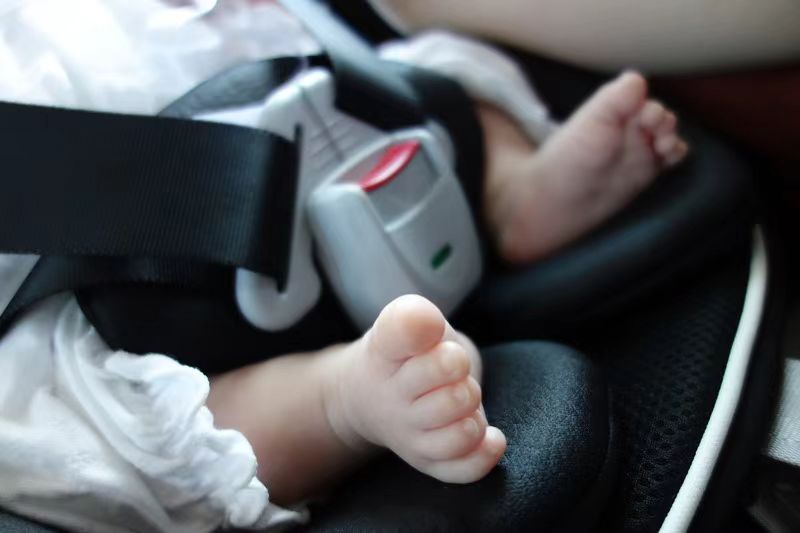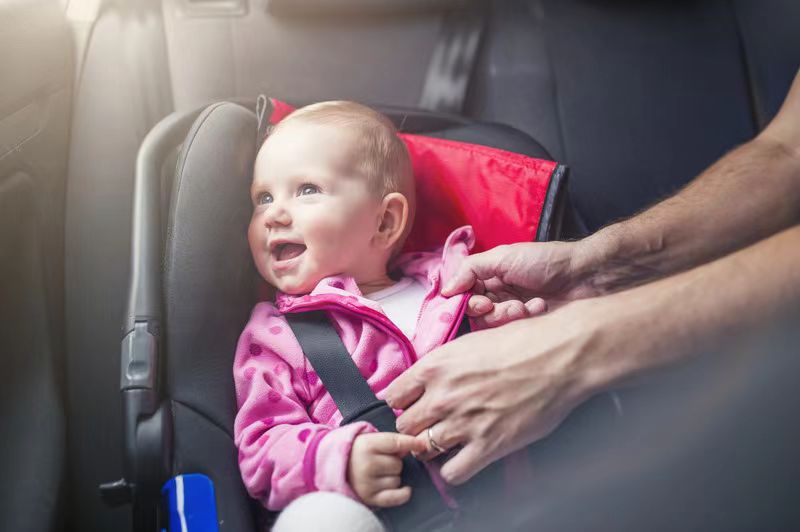Surging Demand for Child Safety Seats Driven by Western Legislation
As global consumption trends evolve and parenting concepts shift, child safety seats have become a crucial product for ensuring children’s safety in vehicles. The demand for these seats is steadily increasing in international markets, particularly in developed regions like Europe and North America. Strict laws and regulations in these areas are driving the widespread adoption of safety seats, presenting Chinese mother and baby product companies with significant opportunities for overseas expansion.

Overview of the Global Child Safety Seat Market
The global demand for child safety seats continues to grow. According to Market Reports World’s “2023-2028 Baby Products Market Size and Revenue” report, the global baby products market was valued at approximately $206.6 billion in 2022, and it is projected to reach $237.6 billion by 2028, with a compound annual growth rate of 2.36%. Among these products, safety seats stand out as a key growth area. Regionally, North America and Europe are the primary consumers of child safety seats.
Western Legislation Fuels Market Growth
The widespread use of safety seats in developed Western countries is closely tied to legislative action. These countries have strict laws regarding child passenger safety, including:
United States:
Legislation mandates that children under 9 years old, weighing less than 36 kilograms (80 pounds), or shorter than 145 centimeters (57 inches) must use a child safety seat. Specific states have additional mandatory regulations, such as fines ranging from $25 to $500 for not using booster seats for children aged 4-9.
United Kingdom:
Child passenger safety is highly prioritized, with the Child Car Seats Act introduced as early as 2006. It is illegal to place rear-facing child seats in the front seats of vehicles, with violators facing hefty fines.
Australia:
Legislation dating back to 1985 mandates that children under 8 years old must use safety seats, with fines imposed for non-compliance.
Sweden:
Since 1982, Sweden has required child protection devices in vehicles by law.
New Zealand:
Children under 7 years old must use child seats.
Germany:
Children under 12 years old or shorter than 150 cm must be equipped with safety seats.
Italy and France:
Both countries require children under 10 years old to use safety seats.
These stringent regulations not only raise public awareness of child passenger safety but also directly contribute to the rapid growth of the safety seat market. According to market research reports, despite global economic uncertainties, over 70% of respondents indicated that they plan to maintain or increase their spending on baby products and services. This trend is especially pronounced in Western markets, driving significant demand for child safety seats.
In January 2010, the revised “C-NCAP Collision Rules” were implemented in China, with child passenger safety evaluation standards incorporated into the C-NCAP assessment system. Currently, the usage rate of safety seats in developed Western countries exceeds 90%.
What Products Do Parents Prefer?
High Interest in Convenience and Washable Features
1. Portable Car Safety Seats
Consumers are drawn to products with easy-to-fold, easy-to-clean, and easy-to-wash attributes. User-friendly products tend to gain a positive reputation.
According to Magic Mirror survey data, 37.78% of consumers acknowledge and are certain to purchase portable car safety seats, with 48.89% considering a purchase.
A quarter of consumers are highly likely to recommend such products to others, and 44.44% are very willing to recommend, indicating strong word-of-mouth potential.
2. Washable Car Safety Seats
Data shows that 44.12% of consumers recognize and are certain to purchase washable car safety seats, with 44.18% considering a purchase.
The premium potential for this feature is weaker, with a third of consumers unwilling to pay significantly more, and nearly half only willing to accept a slight premium.
Due to the product’s practicality, nearly half of the consumers are extremely willing to recommend it to others, and about a quarter are very willing to recommend, making it easy for this feature to spread among consumers.
Consumers Value Head and Neck Safety
Safety remains the core attribute of car safety seats, with consumers particularly focused on protection for the head and neck.
Consumers prioritize safety features related to the head and neck over those for the chest and abdomen, which receive less than a quarter of the attention.
In terms of safety features, consumers expect to purchase seats with more comprehensive protection, such as five-point harnesses and shock-absorbing capabilities.
Although consumers are highly aware of head and neck safety, awareness of side-impact protection is relatively low, suggesting that current market education on the protective role of side-impact features is insufficient.
Growing Emphasis on Technological Materials and Smart Features
With the widespread adoption of technology and smart products, consumers are increasingly interested in smart car safety seats. For smart products, consumers expect advanced technological materials that offer a balance of comfort and safety while addressing smart cabin needs.
35% of consumers recognize and are certain to purchase smart car safety seats with seating sensors, with 45% considering a purchase.
Smart features have significant premium potential, with nearly 90% of consumers willing to pay more, and about 40% accepting higher prices.
The combination of smart seating sensors with safety features meets both safety and convenience needs, with nearly half of the consumers extremely willing to share their experiences with such products.

The focus on smart features extends to smart home integration and technological fabric demands, such as smart controls for ventilation and heating, integrating with home or vehicle systems, and high-tech materials that offer antimicrobial properties, easy cleaning, and breathability.
Currently, consumers’ expectations for smart car safety seats are highest for products suitable for ages 0-6, rather than all-age coverage, which is not as appealing to consumers.




